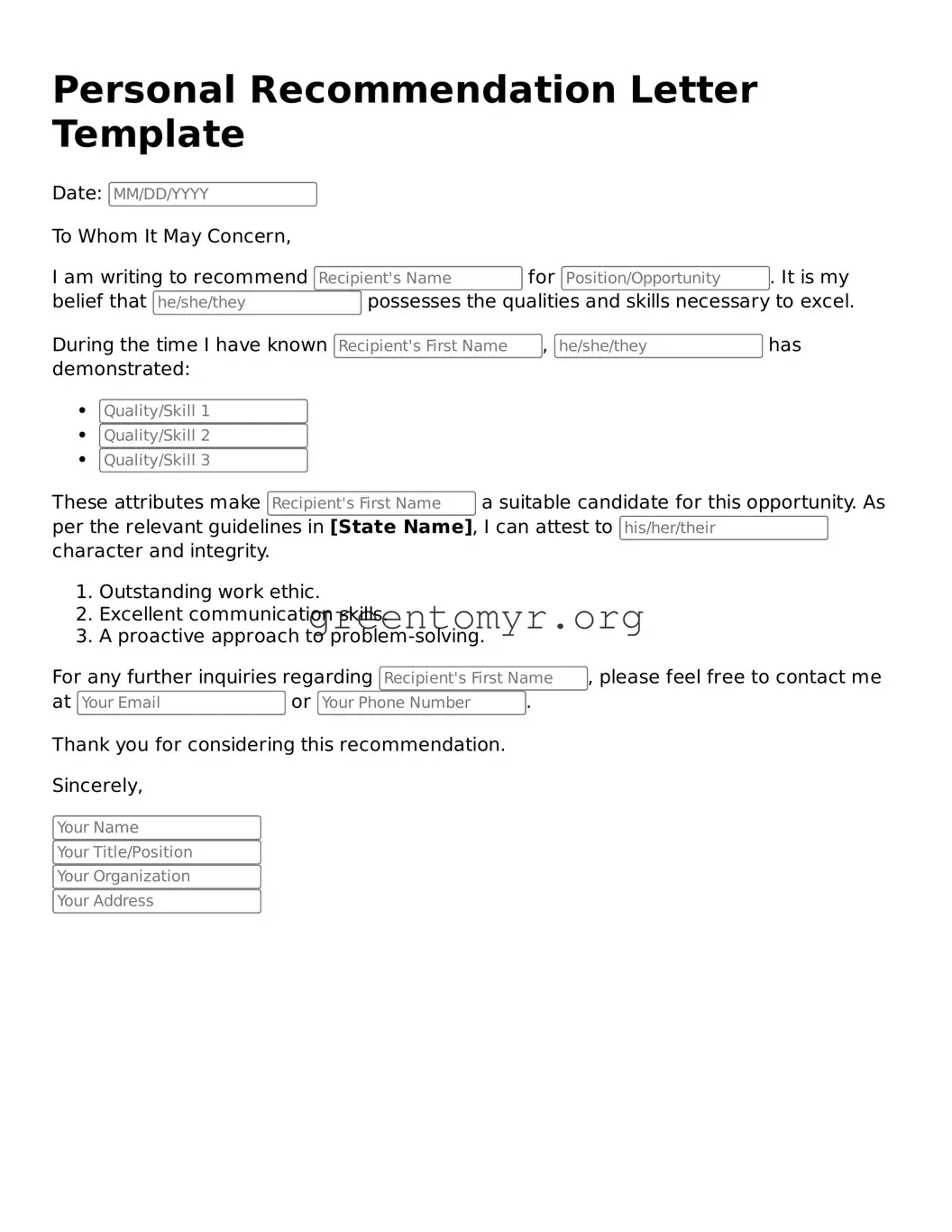When filling out a Personal Recommendation Letter form, individuals often overlook key aspects that can significantly impact the quality and effectiveness of their submissions. One common mistake is failing to provide specific examples of the person's qualifications and achievements. General praise may sound nice, but concrete instances of the candidate's skills or accomplishments carry much more weight.
Another frequent error is neglecting to tailor the letter to the specific opportunity or institution. A generic letter may cause the reader to question the recommender's genuine support. Each recommendation should reflect an understanding of the qualities sought by the recipient, aligning the candidate's strengths with their requirements.
Misunderstanding the relationship with the candidate can also lead to inaccuracies. A recommender must clearly outline their connection and experience with the candidate. This context helps establish the credibility of the recommendation. Without this information, the letter may lack necessary context, diminishing its effectiveness.
Additionally, some people underestimate the importance of reviewing the letter for grammatical errors and typos. A letter filled with mistakes may indicate a lack of effort or attention to detail. Take the time to proofread and ensure clarity and professionalism in the writing.
A common mistake involves disregarding the recommended length of the letter. Some recommender's exceed word counts or provide insufficient detail. A balance must be struck; the letter should be concise yet informative, typically one to three pages depending on the requirements.
Another issue arises from incomplete or vague descriptions. Using phrases that lack substance can confuse the reader. Instead of saying, "I highly recommend," it is more effective to elaborate on why that recommendation is warranted through examples and achievements.
Furthermore, failing to include personal anecdotes can make the recommendation less engaging. Personal stories illustrate the candidate's character and work ethic, offering a glimpse into their personality beyond professional qualifications.
Some individuals forget to update their recommenders. Providing the recommender with the latest information about the candidate helps them write an informed letter. This includes the candidate's recent accomplishments, goals, and the specific program or job to which they are applying.
Inconsistencies in tone and style between the recommendation and the applicant's resume or cover letter can undermine its effectiveness. A smooth alignment helps create a cohesive narrative about the candidate's capabilities and potential.
Lastly, not providing adequate time for the recommendation to be completed can lead to rushed and less thoughtful letters. Approach potential recommenders with ample notice and an understanding of their other commitments, allowing them the time needed to produce a thoughtful recommendation.
